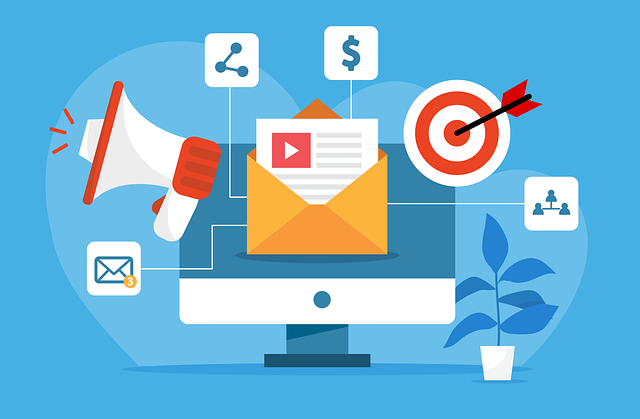Acquiring leads is only part of the journey. The real challenge begins with understanding which leads are most likely to convert and how to engage them effectively. That’s where lead scoring comes into play. By assigning a value to each lead based on their behavior, engagement, and fit, businesses can prioritize their efforts on the leads that matter most. But, here’s the catch: a poorly optimized lead scoring system can waste time and resources, leading to missed opportunities and increased costs.
In this guide, we’ll break down how to optimize your lead scoring process to acquire high-quality leads efficiently. Whether you’re just starting or looking to fine-tune your strategy, these steps will help you get more out of your leads without overspending.
Understanding Lead Scoring and Why It Matters
What Is Lead Scoring?
Lead scoring is a process that assigns a numeric value to potential customers based on their behavior, engagement, and alignment with your ideal customer profile. These scores help you prioritize leads, focusing on those most likely to convert into paying customers.
For instance, someone who visits your pricing page multiple times and downloads a product brochure is probably more interested in your services than someone who just reads a blog post. Assigning higher scores to the former ensures your sales team focuses on the most promising prospects.
The Link Between Lead Scoring and Efficiency
Efficient lead scoring minimizes wasted effort. Instead of treating all leads equally, it allows your sales and marketing teams to prioritize the leads that are most likely to convert. This doesn’t just improve conversion rates; it also shortens the sales cycle and reduces customer acquisition costs.
For example, imagine a scenario where your team chases cold leads while warm, high-value prospects are left waiting. Lead scoring prevents this by directing attention to the hottest opportunities, ensuring resources are used wisely.
Common Challenges in Lead Scoring
Many businesses struggle with lead scoring because they rely on outdated methods or overly simplistic systems. Assigning arbitrary scores without considering actual customer behavior or using generic templates can lead to missed opportunities or wasted effort on low-quality leads.
To overcome these challenges, it’s essential to build a scoring model tailored to your business, continuously refine it, and align it with your broader marketing and sales goals.
Building a Customized Lead Scoring Model

Define Your Ideal Customer Profile
Before you can score leads effectively, you need to know who your ideal customer is. This involves creating detailed buyer personas based on factors like demographics, industry, job role, and challenges. The more specific you are, the better your scoring system will work.
For example, if you sell B2B software, your ideal customer might be a mid-sized business owner in the tech industry looking for workflow automation solutions. Defining this profile helps you score leads based on how well they match your target audience.
Once you’ve defined your ideal customer, align your scoring system to reward leads that share similar characteristics. This ensures you’re focusing on prospects with the highest likelihood of converting.
Use Behavioral and Demographic Data
Effective lead scoring combines two types of data: behavioral (actions leads take) and demographic (who they are). Behavioral data includes activities like website visits, email clicks, and form submissions. Demographic data looks at factors like job title, company size, or location.
For instance, a lead who downloads multiple whitepapers and attends a webinar might score higher on behavior, while someone with the right job title and industry scores higher on demographics. Combining these factors creates a balanced scoring system that identifies high-quality leads.
Your scoring model should reflect the unique actions and attributes that indicate interest and fit for your business. Tailor the weights of each factor to prioritize what matters most to your goals.
Assigning Scores That Reflect Value
Map Actions to Scores
Not all actions are equal. For example, visiting your blog might indicate casual interest, while filling out a pricing request form signals strong buying intent. Your scoring system should reflect these differences by assigning higher scores to high-value actions.
A potential model might look like this:
- Visiting a product page = 10 points
- Attending a webinar = 20 points
- Submitting a demo request = 50 points
Customize these values to reflect the unique signals of interest in your business. Keep in mind that too many points for low-value actions can skew your results, so weigh each behavior carefully.
Include Negative Scoring
Not all leads are worth pursuing, and that’s okay. Negative scoring helps you filter out unqualified leads, such as competitors or users outside your target market. Assign negative points for actions like unsubscribing from emails, providing fake contact information, or being in an irrelevant industry.
For instance, if a lead downloads resources but lists their company as “student project,” you might deduct points to reflect that they’re unlikely to convert. Negative scoring prevents wasted effort and keeps your focus on high-potential opportunities.
Refining Your Scoring with Real-Time Data
Track Engagement Across Channels
Leads don’t engage with your brand on just one platform—they interact across multiple channels, from your website to social media to email. A robust lead scoring system tracks these interactions holistically, creating a complete picture of the lead’s journey.
For example, a lead who engages with your LinkedIn ads, reads multiple blog posts, and downloads an e-book shows consistent interest. Tracking these actions across platforms ensures you’re capturing their overall intent, not just isolated behaviors.
Use marketing automation tools to centralize and analyze engagement data. This streamlines the scoring process and ensures scores are updated in real time.
Adjust Scores Based on Timeliness
Timing is critical in lead scoring. A lead who engages frequently within a short period might signal immediate interest, while one who sporadically interacts over months may not be as urgent. Incorporating time-sensitive adjustments ensures you prioritize leads ready to act now.
For example, a lead who downloads a case study and signs up for a demo within 24 hours might receive a score boost. On the other hand, leads who haven’t interacted in weeks may see their score decrease to reflect waning interest.
Timely adjustments keep your scoring dynamic, helping your team focus on leads with the highest urgency.
Aligning Lead Scoring with Sales and Marketing

Create a Shared Definition of a Qualified Lead
One common pitfall is misalignment between marketing and sales on what constitutes a qualified lead. If marketing hands off leads too early or sales disregards high-potential prospects, opportunities are lost.
Collaborate with both teams to create a clear, shared definition of a sales-qualified lead (SQL). This might include specific behavioral scores, demographic criteria, or engagement thresholds.
For example, you might define an SQL as a lead with a score above 80 who has engaged with a pricing page and belongs to a company with 50+ employees. Clarity ensures everyone is on the same page and working toward the same goals.
Enable Seamless Handoffs
Once a lead reaches the SQL threshold, the handoff to sales should be smooth and timely. Use CRM systems to automate this process, ensuring leads don’t fall through the cracks. Include relevant context, like their engagement history or key actions, to help sales tailor their approach.
For instance, if a lead signs up for a free trial, the sales team should know exactly which features they explored. This personalized outreach increases the chances of conversion and builds trust with the prospect.
Continuously Optimizing Your Lead Scoring Model
Analyze Conversion Data
The best way to refine your lead scoring system is to analyze what works. Track which scored leads convert into customers, and look for patterns in their behaviors or attributes. Use this data to adjust your scoring weights and improve accuracy.
For example, if leads who attend webinars convert at a higher rate than those who download whitepapers, increase the score assigned to webinar attendance. Regular analysis ensures your system evolves with your business and audience.
Test and Iterate
Lead scoring isn’t a one-and-done process. Periodically test your model by comparing its performance against real outcomes. For instance, are high-scoring leads converting as expected? If not, refine your criteria to better reflect customer intent.
Continuous iteration keeps your system aligned with changing market trends, ensuring it remains a reliable tool for prioritizing leads.

Related: Check out our free tools:

Leveraging Technology for Scalable Lead Scoring
Utilize Marketing Automation Tools
One of the most effective ways to optimize and scale your lead scoring process is by leveraging marketing automation platforms. Tools like HubSpot, Marketo, or Pardot allow you to set up custom lead scoring models and track lead behavior across channels automatically.
For example, a lead who clicks on a promotional email and then visits your pricing page can be instantly scored higher by the system. Automation ensures no action goes unnoticed, helping you respond to potential customers in real time.
These platforms also integrate with CRM systems, enabling seamless communication between marketing and sales teams. This reduces the manual workload and ensures consistency in how leads are scored and managed.
Integrate AI for Predictive Scoring
Artificial intelligence can take lead scoring to the next level by identifying patterns and predicting which leads are most likely to convert. AI analyzes historical data, such as previous conversion trends and lead behavior, to refine your scoring model continuously.
For example, AI can reveal that leads who engage with certain combinations of content (like a blog post followed by a webinar) are more likely to convert. With these insights, you can adjust your scoring system to prioritize similar behaviors.
Predictive scoring adds a layer of intelligence to your process, helping you make data-driven decisions and stay ahead of the competition.
Monitor System Performance
While technology can significantly enhance lead scoring, it’s important to monitor its performance regularly. Automation tools are only as good as the rules and algorithms you set up. If your system assigns incorrect scores or fails to capture critical behaviors, it can lead to missed opportunities.
Set aside time to review the output of your automated lead scoring system. Look for inconsistencies, gaps, or areas where the model can be improved. Regular audits ensure your technology works as intended and aligns with your overall goals.
Nurturing Leads Beyond the Score

Personalize Your Follow-Up Strategy
Once a lead reaches a certain score, the next step is critical: how you engage them. Personalization is key to turning a qualified lead into a paying customer. Use the information from the scoring process—such as the content they’ve engaged with or their interests—to craft tailored follow-ups.
For instance, if a lead frequently visits your “case studies” page, send them an email featuring customer success stories relevant to their industry. This targeted approach makes your communication more relevant and impactful.
Avoid generic outreach, as it can dilute the value of your lead scoring efforts. Personalization ensures your messages resonate with leads, increasing the chances of conversion.
Nurture Low-Scoring Leads
Not all leads with a low score are dead ends. Some may need more time or nurturing to move further down the funnel. Create nurturing campaigns specifically designed for these leads, providing value without overwhelming them with sales pitches.
For example, send educational resources, such as blog posts or e-books, that address their pain points. Over time, as they engage with this content, their score will increase, signaling that they’re becoming more ready to buy.
Nurturing low-scoring leads ensures you’re not leaving potential opportunities on the table while focusing your immediate efforts on high-priority prospects.
Scaling Lead Scoring as Your Business Grows
Adapt Your Scoring Model for New Markets
As your business grows and enters new markets, your lead scoring model should evolve to reflect these changes. Different industries, geographies, or customer segments may require unique scoring criteria.
For instance, a SaaS company expanding into enterprise markets might need to prioritize leads from companies with a larger employee base. Adjust your scoring system to account for these nuances, ensuring it remains relevant and effective.
Revisit your scoring model regularly to align it with your broader growth strategy and changing customer base.
Train Your Teams on Lead Scoring
Scaling lead scoring isn’t just about technology—it’s also about empowering your teams. Train your sales and marketing teams on how the scoring system works, what it measures, and how to act on the insights it provides.
For example, provide workshops or resources that explain how to interpret lead scores and use them to tailor follow-up strategies. Encourage collaboration between teams to refine the process and address any challenges.
A well-trained team ensures that your lead scoring system delivers maximum value, even as your business scales.
Measuring the ROI of Lead Scoring

Track Conversion Rates
One of the most direct ways to measure the ROI of your lead scoring system is by tracking conversion rates. Compare the conversion rates of high-scoring leads versus low-scoring ones to assess the accuracy and effectiveness of your scoring model.
For example, if 70% of leads with a score above 80 convert, it’s a strong indicator that your system is working well. Conversely, if low-scoring leads frequently convert, you may need to revisit your criteria.
This data helps you refine your scoring model and demonstrate its value to stakeholders.
Calculate Cost Savings
Lead scoring isn’t just about driving conversions—it’s also about saving time and resources. By focusing your efforts on high-priority leads, you reduce the time sales teams spend chasing unqualified prospects. This efficiency translates into lower acquisition costs and higher productivity.
For instance, if your sales team spends 30% less time on low-quality leads thanks to lead scoring, calculate the cost savings in terms of labor and resources. Highlighting these savings can showcase the tangible benefits of your system.
Monitor Long-Term Customer Value
Beyond immediate conversions, lead scoring impacts the quality of customers you acquire. High-scoring leads are more likely to align with your ideal customer profile, resulting in higher retention rates and lifetime value (LTV).
Track metrics like LTV and churn rates for customers acquired through lead scoring to assess its long-term impact. If these customers consistently deliver more value, it’s a clear sign that your system is driving meaningful results.
Conclusion: The Path to Efficient Lead Acquisition
Optimized lead scoring is more than a tool—it’s a strategy for acquiring quality leads while saving time and resources. By focusing on behaviors and attributes that truly indicate interest, tracking engagement in real time, and aligning with your sales and marketing teams, you can create a system that delivers consistent results.
Remember, lead scoring isn’t static. It requires ongoing refinement, collaboration, and a commitment to understanding your audience. When done right, it not only improves lead quality but also shortens sales cycles and lowers acquisition costs.
Start by defining your goals, building a tailored model, and refining it through real-world data. The payoff? A smarter, more efficient approach to acquiring leads that drive real business growth.
READ NEXT:
- Are Vanity Metrics Killing Your Marketing Efficiency? Here’s What to Track Instead
- Pinpointing Digital Marketing ROI: Why Your Metrics Aren’t Telling the Full Story
- Unlocking Real ROI in Digital Marketing: The Hidden Costs Draining Your Budget
- How Misaligned Marketing Funnels Are Blocking Your ROI Potential
- Best Digital Marketing Agency In Santa Ana, California
- Best Digital Marketing Agency In San Francisco, California





















